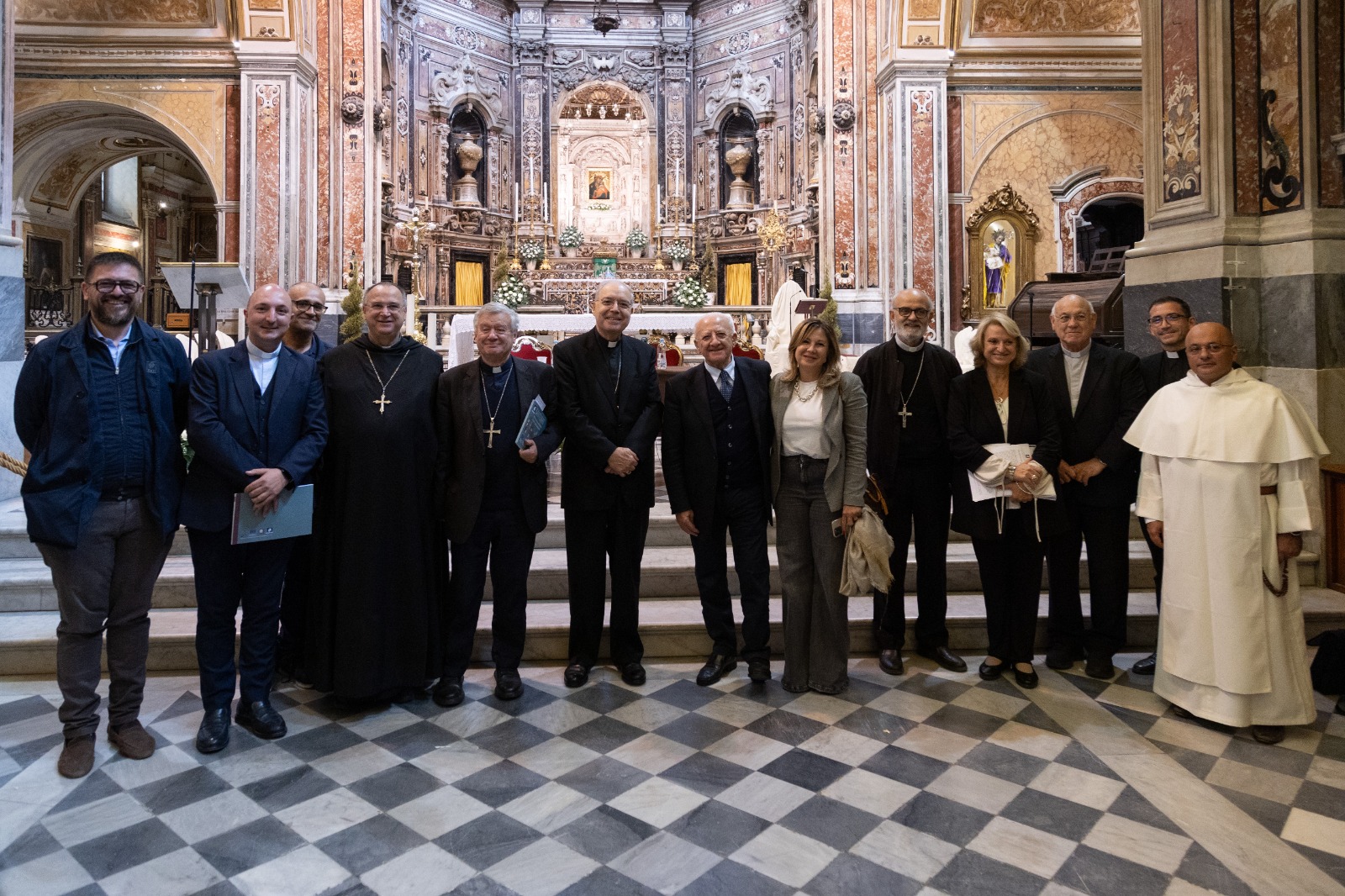Yesterday, in the evocative setting of the Basilica Santuario di Maria Santissima del Carmine Maggiore in Naples, the volume ‘Santuari. Valorisation of places of worship in Campania’, a publication that collects and recounts the interventions carried out as part of the Sanctuaries Project. The initiative, launched in 2018 thanks to the POR Campania FESR 2014/2020 funds, aimed to protect, conserve and enhance some of the most significant places of worship in Campania.
The project involved 53 shrines distributed in all the provinces of the Campania Region, chosen for their particular religious, artistic and historical value. The interventions concerned fundamental aspects such as the conservation and security of buildings, energy efficiency and the creation of spaces dedicated to the reception of pilgrims. In many cases, the cultural offer has also been enhanced, with the creation of exhibition stands, digital and immersive experiences, and new spaces for events and cultural activities.
The main purpose of the project was to promote the flows of pilgrimage and religious tourism, in particular in those areas of the Campanian territory still poorly developed in terms of tourism, but very rich in spiritual testimonies and natural beauty. The valued sanctuaries represent not only places of worship and devotion, but also goods of great historical, artistic and anthropological interest, often immersed in landscapes of exceptional charm.
The ‘Sanctuaries’ catalogue consists of 53 descriptive sheets, each accompanied by texts and images illustrating the peculiarities of the sites. The volume is intended as an information and support tool for pilgrims and visitors interested in planning tourist-religious itineraries, offering an overview of the vast Campanian heritage linked to faith and popular traditions.
The catalogue also lists the ‘Jubilee places’ – shrines and churches where the plenary indulgence can be obtained – and there are QR codes for information on regional routes, routes that represent the encounter between pilgrimage, spiritual tourism and slow tourism. The routes, initially four and now up to five, are an integral part of the Regional Atlas of the Ways, a parallel project aimed at promoting a conscious and sustainable use of the Campanian territories.
DOWNLOAD THE VOLUME




